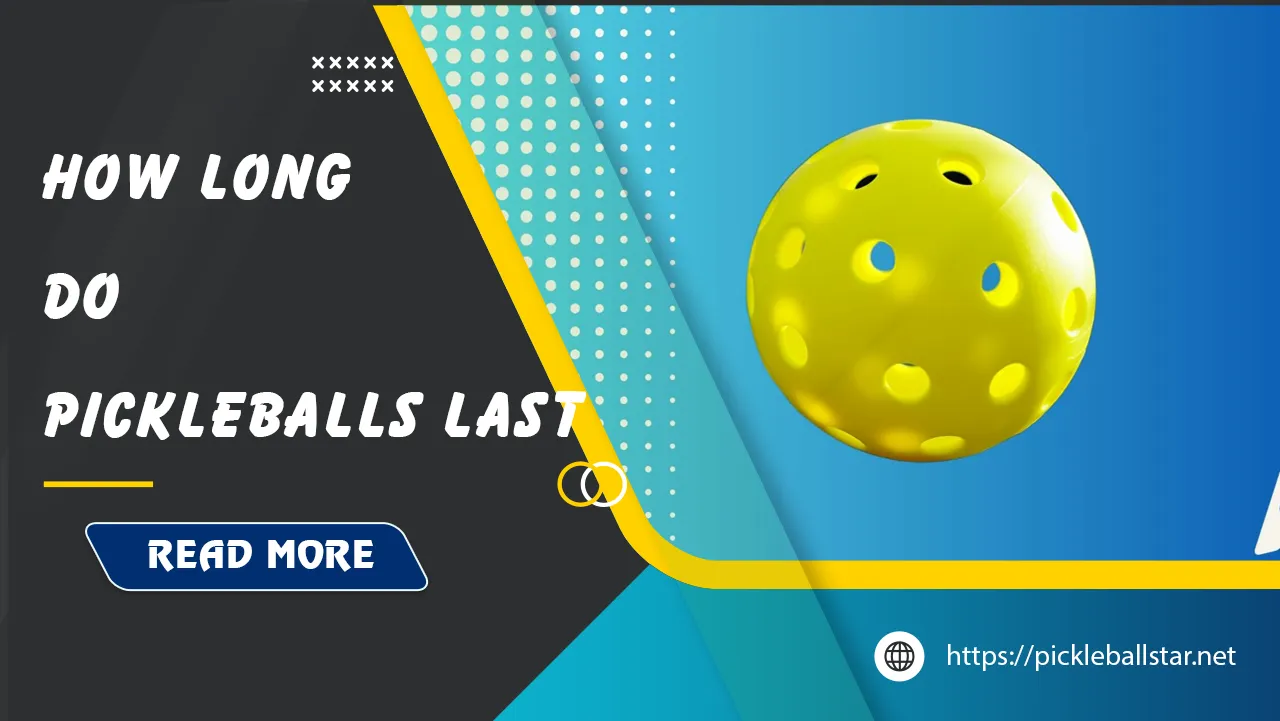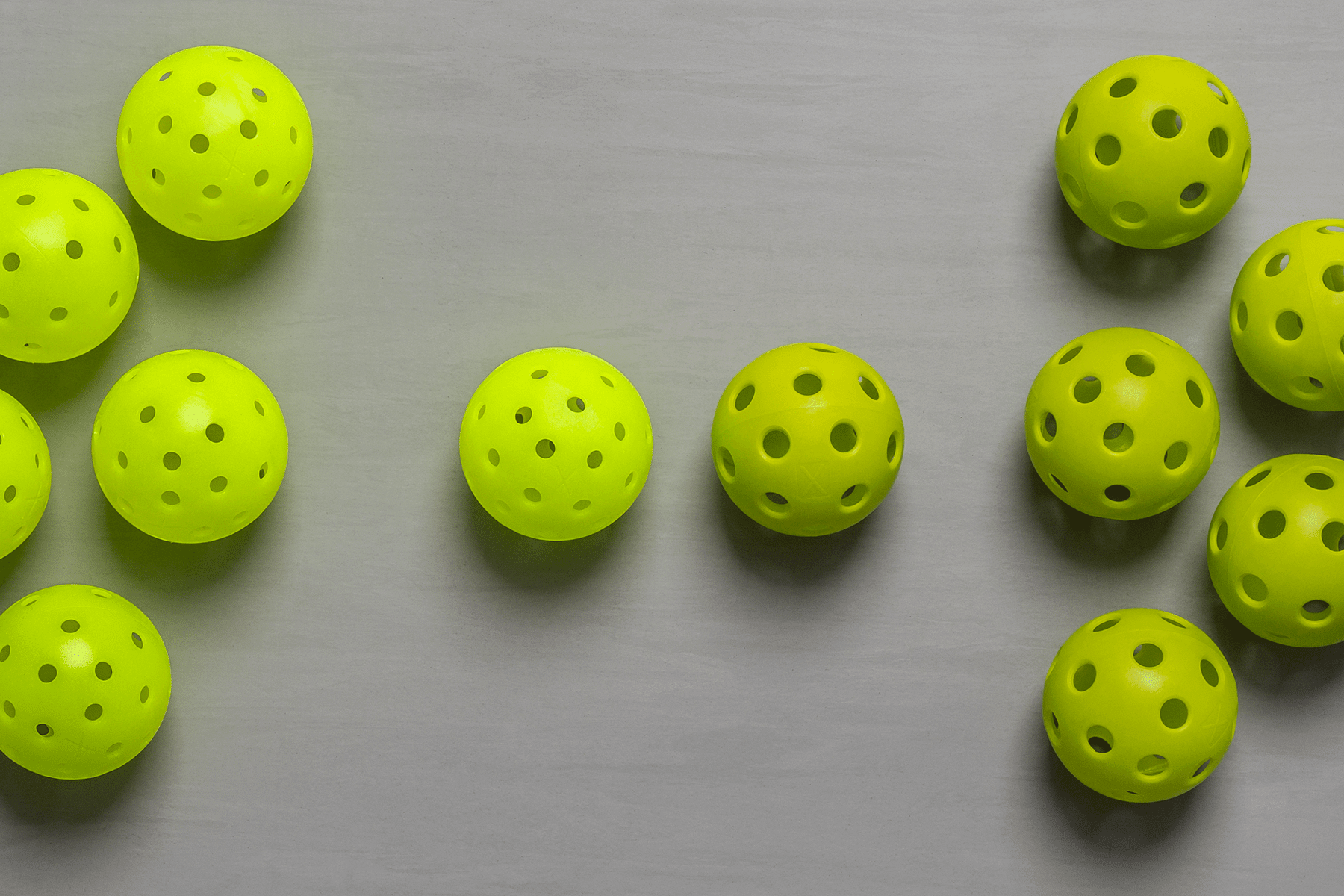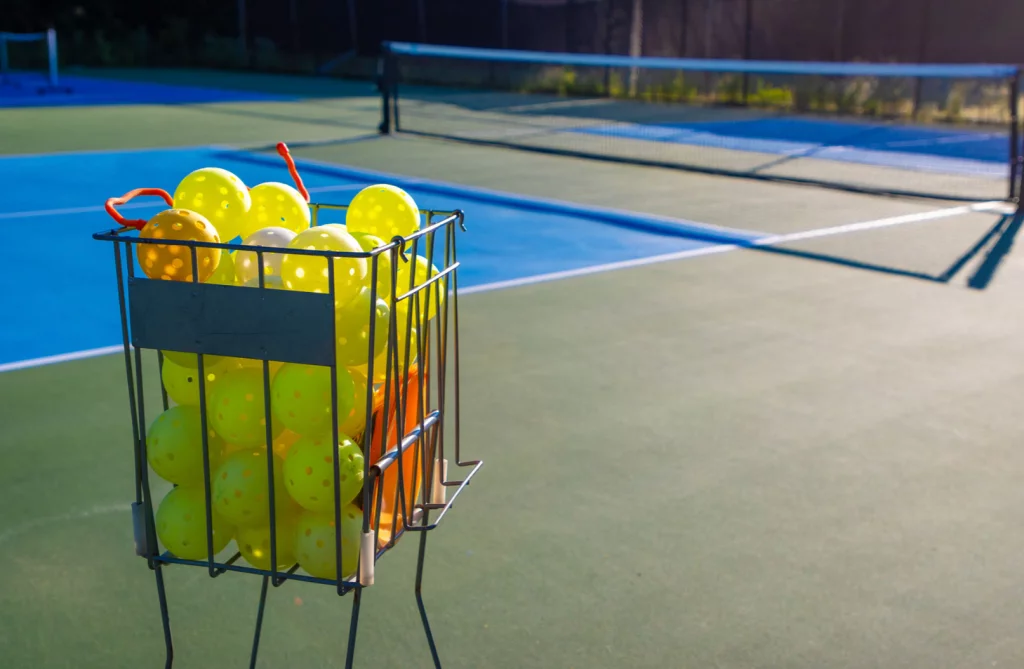How Long Do Pickleballs Last?
In the world of pickleball, players often wonder about the lifespan of their gear, especially the pickleballs themselves. Understanding how long do pickleballs last can save you both time and money, and improve your overall playing experience. This article delves into various aspects that determine the longevity of pickleballs, signs that they need replacement, tips for extending their life, and answers to some common questions you’ll likely have. Let’s explore the fascinating world of pickleball durability.

How Long Do Pickleballs Last?
- Indoor Pickleballs: Indoor balls generally last longer, averaging between 3-6 months depending on the intensity and frequency of play.
- Outdoor Pickleballs: These tend to wear out faster due to harsher conditions and generally last between 2-4 weeks of regular play.
Read more: Indoor vs Outdoor Pickleballs: The Ultimate Guide
Factors Affecting Pickleball Lifespan: What Impacts Durability
Understanding the factors that contribute to the lifespan of pickleballs requires looking at a variety of elements, from the conditions you play in to the materials used in the balls themselves.

Outdoor Conditions and Their Impact
Pickleballs are subject to the whims of Mother Nature, which can significantly affect their durability.
- Temperature Variations: Exposing pickleballs to extreme temperatures, whether hot or cold, can alter their plastic structure, making them brittle or too soft. For instance, high temperatures tend to soften the plastic, thereby affecting the ball’s bounce and flight, while cold weather makes it more prone to cracks.
- UV Exposure: Prolonged exposure to sunlight’s ultraviolet rays can degrade the plastic compound, leading to a faster breakdown. You might have noticed how an old outdoor ball looks faded and feels less sturdy.
- Moisture and Rain: Pickleballs that frequently get wet and dry off can experience expansion and contraction cycles that compromise their structural integrity. Always have a dry storage option to mitigate this issue.
Construction and Material Differences
Not all pickleballs are created equal. The material and construction quality can vary widely between brands and types.
- High-Quality vs. Lower-Quality Pickleballs: High-quality pickleballs often use premium plastics designed to withstand harsh playing conditions better. These materials are typically UV-resistant and have multiple layers to enhance durability. On the other hand, lower-quality versions can be more susceptible to wear and tear.
- Indoor vs. Outdoor Balls: Recognize the distinct differences between indoor and outdoor pickleballs, as they are designed to handle different environments. Indoor balls are lighter and have larger holes, which make them less durable outdoors. Conversely, outdoor balls are heavier and have smaller holes to resist wind but tend to wear out faster on rough surfaces.
Impact of Playing Style
Every player has a unique way of playing, and this too can influence how long your pickleballs last.
- Intensity of Play: Aggressive players who hit the ball with more force and play more frequently are likely to wear out their pickleballs quicker. The impact and friction generated by powerful hits contribute to faster deterioration.
- Type of Surface: The surface you play on also matters. Rough surfaces like asphalt or concrete can cause more abrasion, wearing out the ball sooner compared to smoother surfaces like indoor gym floors or dedicated pickleball courts.
Signs of a Worn-Out Pickleball: Knowing When to Replace
Identifying when a pickleball has reached the end of its lifespan is crucial for maintaining a quality playing experience. Here’s how to know when it’s time to retire those old pickleballs.

Loss of Bounce
One of the most obvious signs that a pickleball is worn out is a noticeable decline in its bounce.
- Performance Check: Test the bounce by dropping the ball from shoulder height and observing if it bounces back consistently. If it starts to bounce erratically or not as high as usual, it’s time to replace it.
- In-Game Performance: You might also notice during play that the ball doesn’t travel as expected or feels “dead” when you hit it. These are clear indicators that the ball’s internal structure has degraded.
Visual Cues
Sometimes, a simple visual inspection can tell you a lot about the condition of your pickleballs.
- Surface Cracks and Dents: Regularly inspect the ball for any cracks or substantial dents. Even minor imperfections can affect the ball’s flight and bounce.
- Color Fading: A faded ball not only looks old but likely has been exposed to the elements, thereby compromising its durability.
Read more: Pickleball Colors: Finding the Perfect Palette for Your Game
Playability and Feel
Apart from bounce and looks, how a ball feels in your hand and during gameplay is also an indicator.
- Grip and Texture: Over time, the texture on the ball’s surface can wear down, making it slippery and harder to control, especially under sweaty conditions.
- Sound Test: The sound a ball makes when hit can also provide clues. A dull thud instead of a crisp pop usually means the ball’s structure has been compromised.
Extending Pickleball Lifespan: Tips for Care and Maintenance
While you can’t make a pickleball last forever, you can extend its life significantly by following some simple care and maintenance tips.

Storage Practices
Proper storage can make a world of difference in extending the life of your pickleballs.
- Dry and Cool Storage: Store your pickleballs in a dry, cool place away from direct sunlight. This will minimize exposure to damaging UV rays and extreme temperatures.
- Use Storage Bags or Containers: Keep your pickleballs in a dedicated bag or container to protect them from moisture and dirt. This also helps in preventing any unnecessary stress on the best pickleball balls when they are not in use.
Read more: Pickleball Ball Holders: The Ultimate Guide to Storage and Organization
Playing Conditions
Adapting your playing habits to different conditions can also help.
- Surface Awareness: Choose smoother surfaces whenever possible. If you’re playing on a particularly rough surface, consider using lower-quality balls for practice and saving the high-quality ones for matches.
- Weather Considerations: Avoid playing with the same set of balls in extreme temperatures. Have separate sets for cold and warm weather to maintain their longevity.
Rotating Your Balls
Just like rotating tires, rotating your pickleballs can balance out the wear and tear.
- Ball Rotation: Use multiple balls in a single session to even out the stress each one undergoes. This will help avoid any single ball wearing out too quickly.
- Periodic Checks: Keep an eye on all the balls in your rotation. Replace any that show significant signs of wear to maintain a consistent playing experience.
Common Questions
When it comes to pickleball durability, certain questions pop up frequently.
Repairing Cracked or Torn Pickleballs
Is it possible to extend the life of a damaged pickleball through repair?
- Short Answer: Unfortunately, repairing a cracked or torn pickleball isn’t feasible. The structural damage is usually irreversible, and playing with a compromised ball can affect your game negatively.
- Long Answer: Instead of attempting repairs, it’s better to replace damaged pickleballs. You’ll get better performance and maintain the integrity of your game.
Care Products
Are there any products to help extend the life of your pickleballs?
- Protective Gear: While there aren’t specific care products for pickleballs like there are for tennis balls, storing them in uv-protective bags or containers can help.
- Cleaning Solutions: Occasionally washing your pickleballs with mild soapy water can remove dirt and grime, extending their life slightly.
Conclusion
Understanding the lifespan of pickleballs involves a blend of insights into storage, play conditions, and material quality. By knowing what affects their durability, recognizing the signs of wear, and applying best practices for care and maintenance, you can extend their usability and get the most bang for your buck.
Key Takeaways
- Environmental Factors: Climate and playing conditions play significant roles in how long your pickleballs last.
- Material and Build Quality: Higher-quality pickleballs often feature better materials, enhancing durability.
- Care and Maintenance: Proper storage and mindful playing practices can extend a ball’s life substantially.
For more tips on pickleball care and maintenance, and to stay updated on the latest gear reviews, make sure to visit reputable pickleball resources and communities online. Remember, taking good care of your pickleballs not only saves you money but also improves your overall game, making your pickleball experience much more enjoyable. Happy playing!
